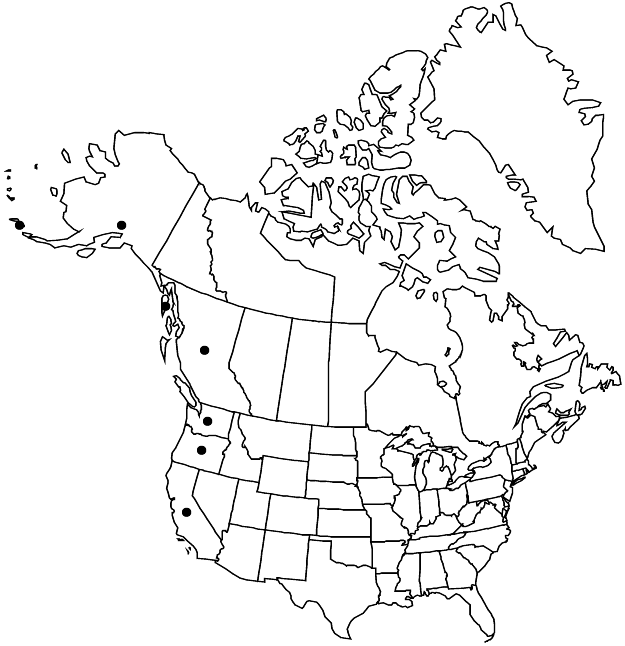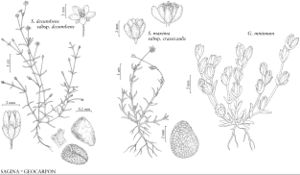Difference between revisions of "Sagina maxima subsp. crassicaulis"
Rhodora 80: 79. 1978.
FNA>Volume Importer |
imported>Volume Importer |
||
| (5 intermediate revisions by 2 users not shown) | |||
| Line 7: | Line 7: | ||
|year=1978 | |year=1978 | ||
}} | }} | ||
| − | |basionyms={{Treatment/ID/ | + | |special_status={{Treatment/ID/Special_status |
| + | |code=F | ||
| + | |label=Illustrated | ||
| + | }} | ||
| + | |basionyms={{Treatment/ID/Basionym | ||
|name=Sagina crassicaulis | |name=Sagina crassicaulis | ||
|authority=S. Watson | |authority=S. Watson | ||
| + | |rank=species | ||
| + | |publication_title=Proc. Amer. Acad. Arts | ||
| + | |publication_place=18: 191. 1883 | ||
}} | }} | ||
|synonyms= | |synonyms= | ||
| Line 35: | Line 42: | ||
-->{{#Taxon: | -->{{#Taxon: | ||
name=Sagina maxima subsp. crassicaulis | name=Sagina maxima subsp. crassicaulis | ||
| − | |||
|authority=(S. Watson) G. E. Crow | |authority=(S. Watson) G. E. Crow | ||
|rank=subspecies | |rank=subspecies | ||
| Line 49: | Line 55: | ||
|publication title=Rhodora | |publication title=Rhodora | ||
|publication year=1978 | |publication year=1978 | ||
| − | |special status= | + | |special status=Illustrated |
| − | |source xml=https:// | + | |source xml=https://bitbucket.org/aafc-mbb/fna-data-curation/src/2e0870ddd59836b60bcf96646a41e87ea5a5943a/coarse_grained_fna_xml/V5/V5_302.xml |
|subfamily=Caryophyllaceae subfam. Alsinoideae | |subfamily=Caryophyllaceae subfam. Alsinoideae | ||
|genus=Sagina | |genus=Sagina | ||
Latest revision as of 22:10, 5 November 2020
Plants perennial, glabrous or mostly so. Stems spreading, decumbent, or procumbent, glabrous, nodes frequently purple tinged. Leaves: basal leaves in rosette of broadly linear, fleshy leaves, or absent with primary or secondary tufts of ascending, linear basal leaves, these usually less fleshy than rosette leaves (rosettes rarely present in plants occurring north of Washington); cauline leaf blades: proximal 6–15 mm, distal 3–5 mm, glabrous. Pedicels slender to stout, glabrous. Flowers: calyx glabrous; sepals ovate to nearly orbiculate, (2–)2.5–3(–3.5) mm; petals elliptic to orbiculate, (1.5–)2–2.5(–3) mm, slightly shorter than sepals. Capsules (3–)3.5–4(–4.5) mm. Seeds smooth to slightly pebbled. 2n = 46, 66.
Phenology: Flowering spring–early autumn.
Habitat: Coastal, moist, sandy bluffs, crevices of rock cliffs, at or near high-tide mark, gravelly-sandy beaches
Elevation: 0-10 m
Distribution

B.C., Alaska, Calif., Oreg., Wash., Asia (Kamchatka).
Discussion
Integradation occurs where the range of subsp. crassicaulis overlaps with that of subsp. maxima. Variation of pubescence in populations on Vancouver Island and the Queen Charlotte Islands ranges from completely glabrous specimens typical of subsp. crassicaulis to individuals with pedicels and calyx bases weakly pubescent, to others with densely pubescent pedicels. Subspecies crassicaulis is far more common than subsp. maxima.
Selected References
None.
